Turn Skills Into A Business Advantage
Earlier this year, we asked our L&D community how upskilling is really going inside their organizations. Over 1300 learning professionals responded, and the results in Inside the state of upskilling were a wake-up call (but the good kind).
TLDR: Upskilling is officially the top priority for L&D teams. That's the good news. The not-so-good news? Most teams are still stuck figuring out how to actually do it.
Here we're diving into where teams are struggling, what's actually working, and how to move from good intentions to real impact.
The Upskilling Disconnect
44% of the survey respondents said their organization offers upskilling from day one, but fewer than 10% do it when a new business need arises.
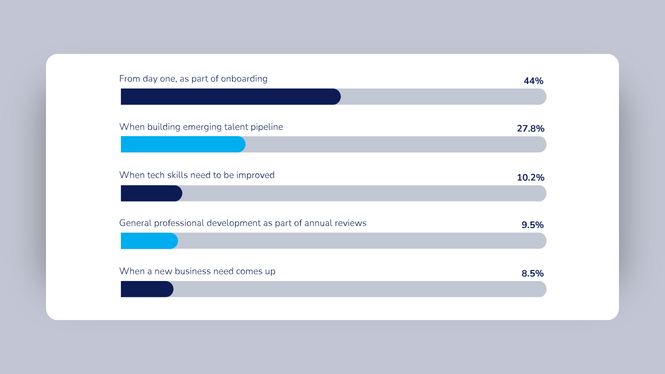
Image by Absorb
If you do this for too long, your learning programs will fall out of sync with the business they're meant to support (if they haven't already).
And the biggest blockers to upskilling programs? Limited people or budget resources, and difficulty finding the right tools.
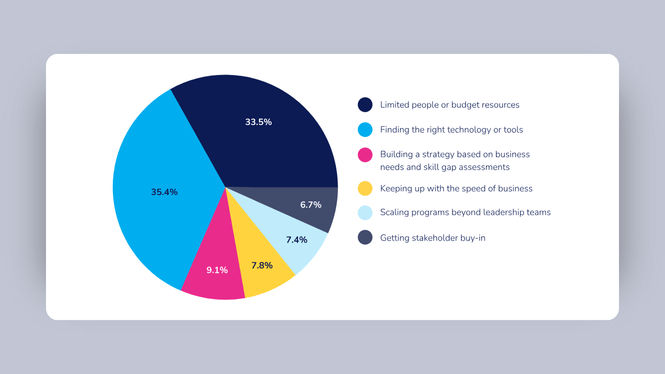
Image by Absorb
So, if you're feeling stuck, you're not alone. We've got some tips for how you can bridge the gap between knowing that upskilling matters and how you're going to implement programs that drive measurable outcomes.
Upskilling Can't Be A Shared Responsibility
A collaborative approach to organizational problems is great. But it also creates a lot of grey space and cracks for good intentions to fall into. If something is everybody's problem, it also makes it no one's responsibility.
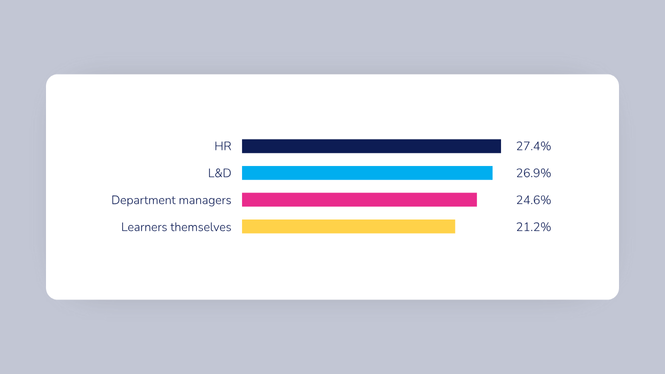
Image by Absorb
It's time to dust off that old RACI chart, because there should only be one owner. Teams can get stuck debating the word skills, but really it's about the work that needs to get done. Defining that work? That's on the business unit. Helping people get work done and the science of how to build skills is what lives with people and learning functions.
People-Based Learning Isn't Being Prioritized
Mentorship is one of the most high-impact ways to build culture, retain talent, and accelerate learning. Despite its impact, 43.6% of organizations aren't using coaching, mentorship, or peer learning—and have no plans to. That's a huge gap. Because upskilling isn't just about content, it's about connection.
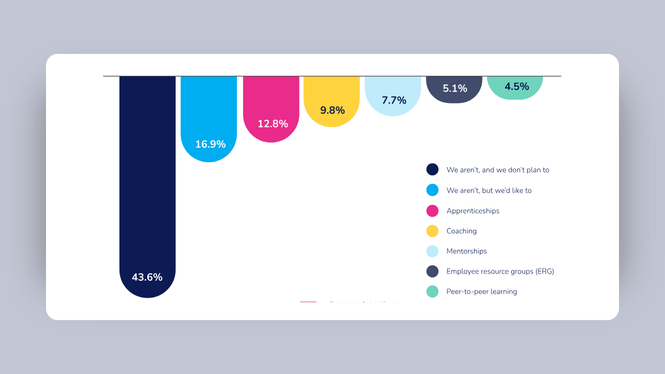
Image by Absorb
If an employee expresses an interest in developing a specific skill, they should be matched with relevant courses, peers, or mentors who can guide them in that area. But one of the biggest barriers to scaling mentorship is matching people effectively. The complexity of aligning skills, goals, and preferences for each person makes the process inefficient and prone to mismatches.
To make social learning a viable option, you need to build it to be sustainable and scalable.
Upskilling Needs To Be Measurable
Upskilling is expected to impact everything from retention to revenue.
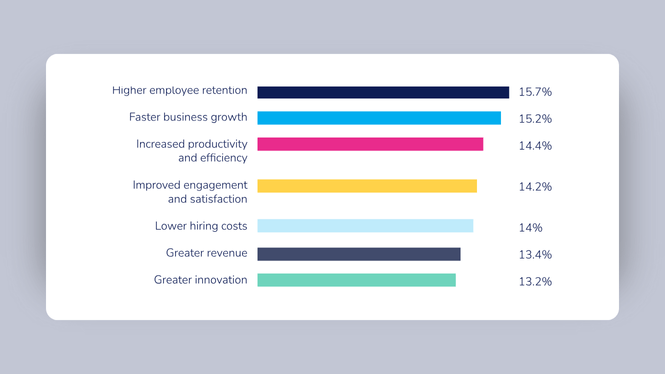
Image by Absorb
But without visibility, leadership won't see the value. You might believe in the impact but proving it (and scaling it) requires better tools, a clearer strategy, and more visibility.
That's why the next step is to link learning data to business outcomes—and make the case for continued investment.
Instead of tracking learning metrics like program participation or learning path completions, think about the business goal you're working towards with upskilling:
- Employee attrition – Reduce voluntary turnover by providing training in areas where employees feel underprepared or disengaged. Track attrition rates before and after implementing this type of upskilling program.
- Employee performance ratings – Improve individual and team performance by identifying which skills correlate with high performance and design training around them. Compare performance ratings pre- and post-training.
- Employee productivity – Increase output and efficiency with microlearning or on-demand resources that solve real-time challenges. Use KPIs like output per employee, task completion time, or quality metrics.
- Employ promotions or internal mobility – Increase internal hiring and career growth with competency frameworks for higher roles and match upskilled employees with open roles. Track internal promotion rates and lateral moves.
- Employee retention – Keep top talent engaged by acknowledging learning achievements. Use surveys to assess how learning impacts engagement and intent to stay. Compare retention rates among employees who participate in upskilling versus those who don't.
What The Best Teams Are Doing Differently
They're shifting from content-first to strategy-first. That means:
- Using data to uncover skill gaps
- Personalizing learning paths
- Tying training to business outcomes
- Scaling with systems that flex as needs change
And yes, AI is playing a big role—automating the busywork, surfacing insights, and helping teams move from reactive to proactive. So, the question becomes: What work is left for people? What are the new role structures? What skills are needed to collaborate with AI agents?
You can't outsource for these skills right now; you need to build them internally. And that puts L&D in the driver's seat.
Take the team at Atlassian. They knew that AI adoption wasn't going to happen miraculously overnight. And they saw that when business needs necessitate a strategy, upskilling is often the best response. So, they created specialized courses to increase awareness and use of AI tools for sales and customer experience teams.
Atlassian saw incredible growth by tying business outcomes to learning:
- 330% increase in AI tool usage among customer-facing teams during the launch month, with sustained engagement post-launch.
- 20.7% improvement in AI prompt effectiveness scores, enhancing the quality of customer communications.
- 19% increase in daily AI tool adoption, driving consistent productivity improvements across the salesforce.
Learn how Atlassian uses Absorb LMS.
How To Close The Upskilling Disconnect At Your Organization
Start small. Pick one business problem, figure out the skills needed to solve it, and build from there. Whether you're upskilling a handful of ICs to be future leaders, or a department on a new skill or piece of technology, don't wait for the perfect plan, get something measurable in motion. Use what you learn to refine your approach, build momentum, and prove value.
Treat upskilling like a muscle: the more you use it, the stronger it gets. And remember, the goal isn't just more learning, it's better outcomes. The gap between intention and impact is real. But with the right focus, L&D teams are in the best position to close it.
And the teams who figure it out first? They won't just keep up, they'll lead.
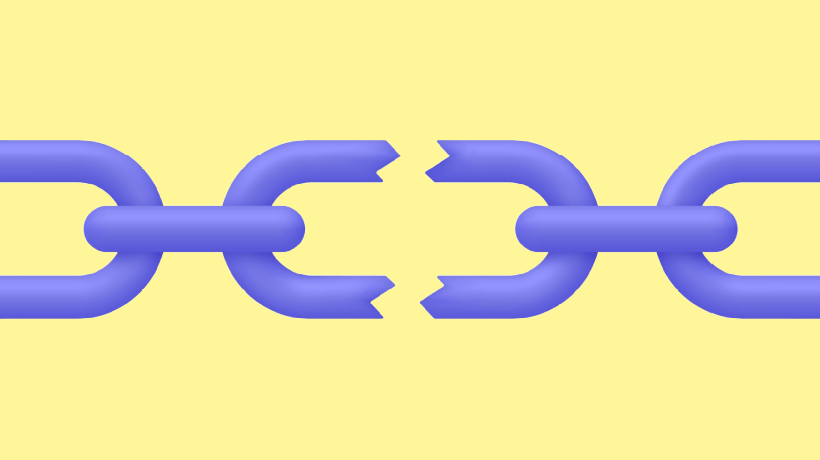


![Turning Learning Into Profit: The 8 L&D Priorities To Drive Corporate Success [eBook Launch]](https://cdn.elearningindustry.com/wp-content/uploads/2025/02/Top-LD-Priorities-To-Drive-Corporate-Success-.jpg)





